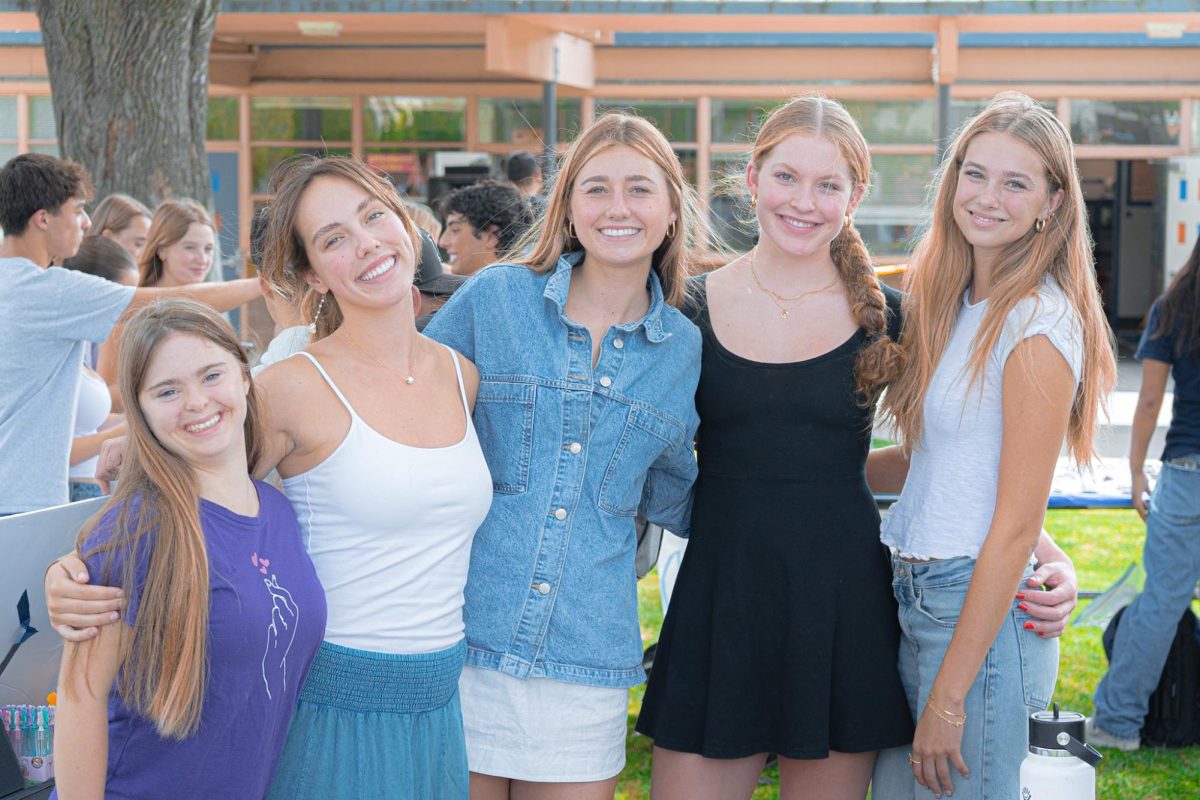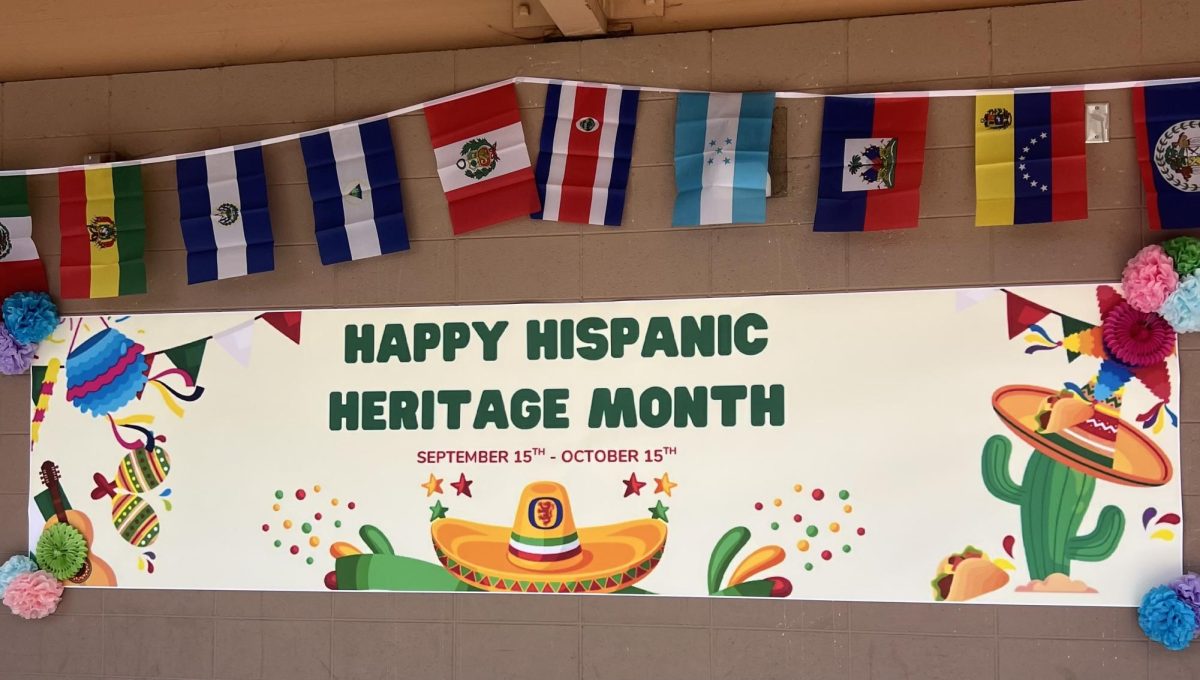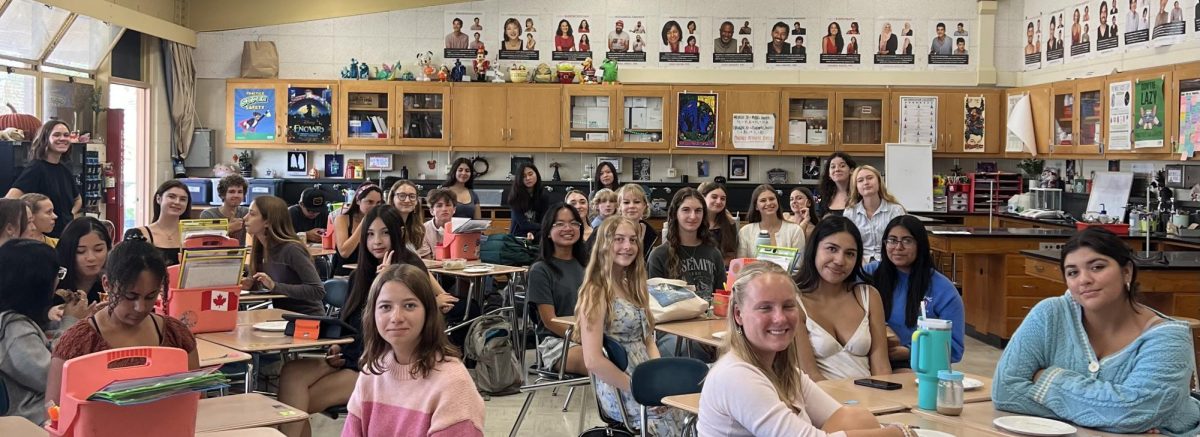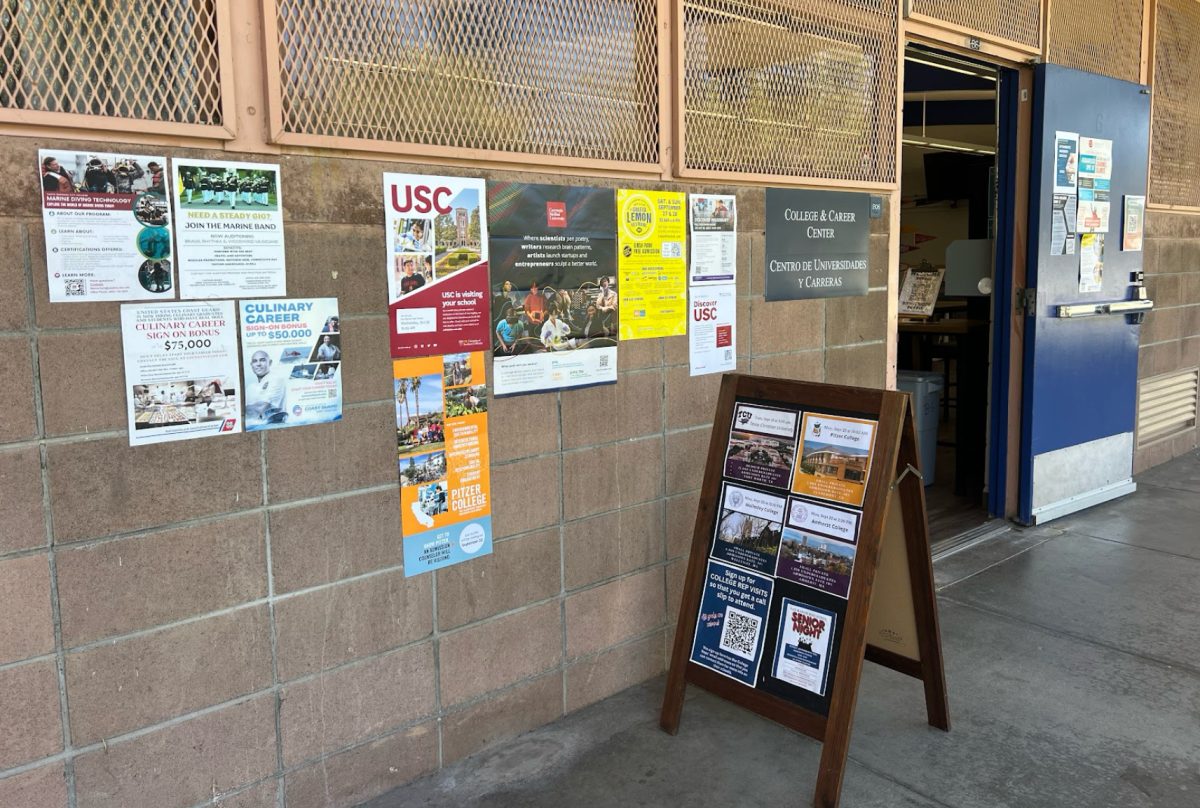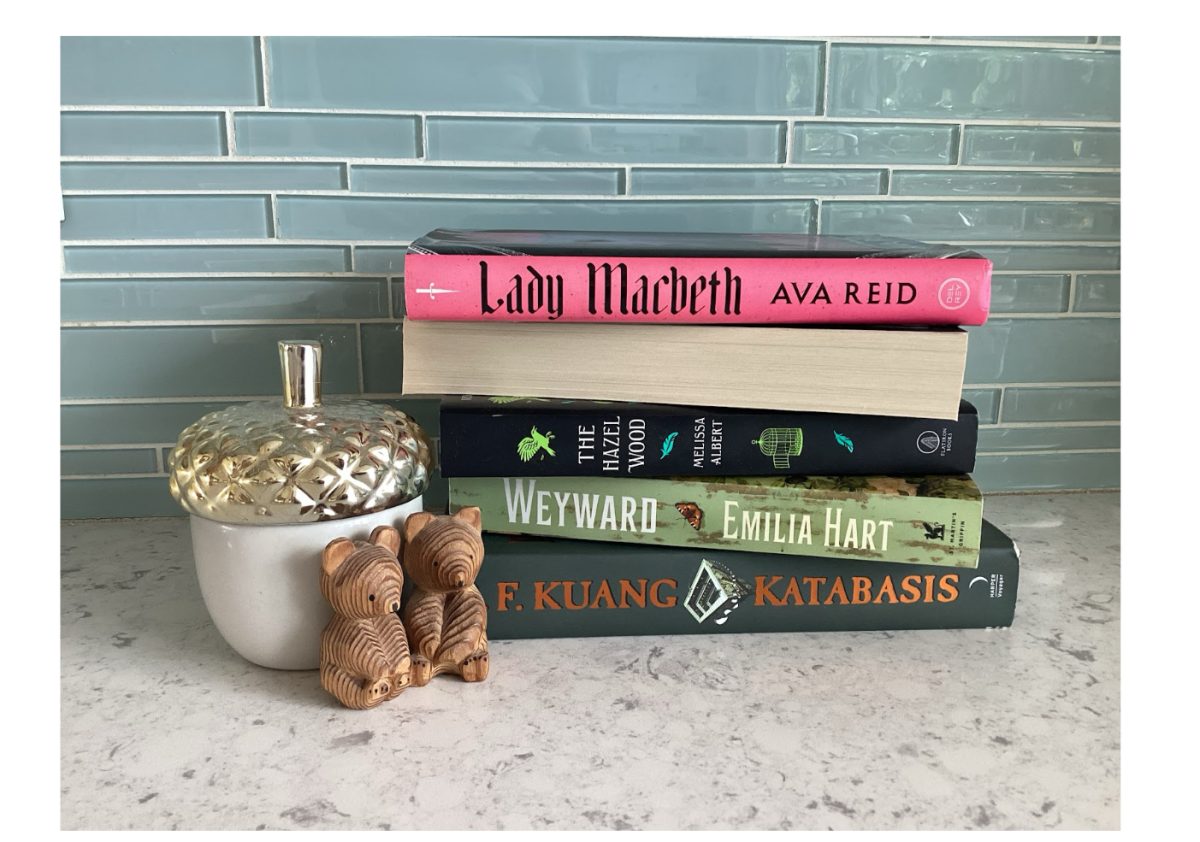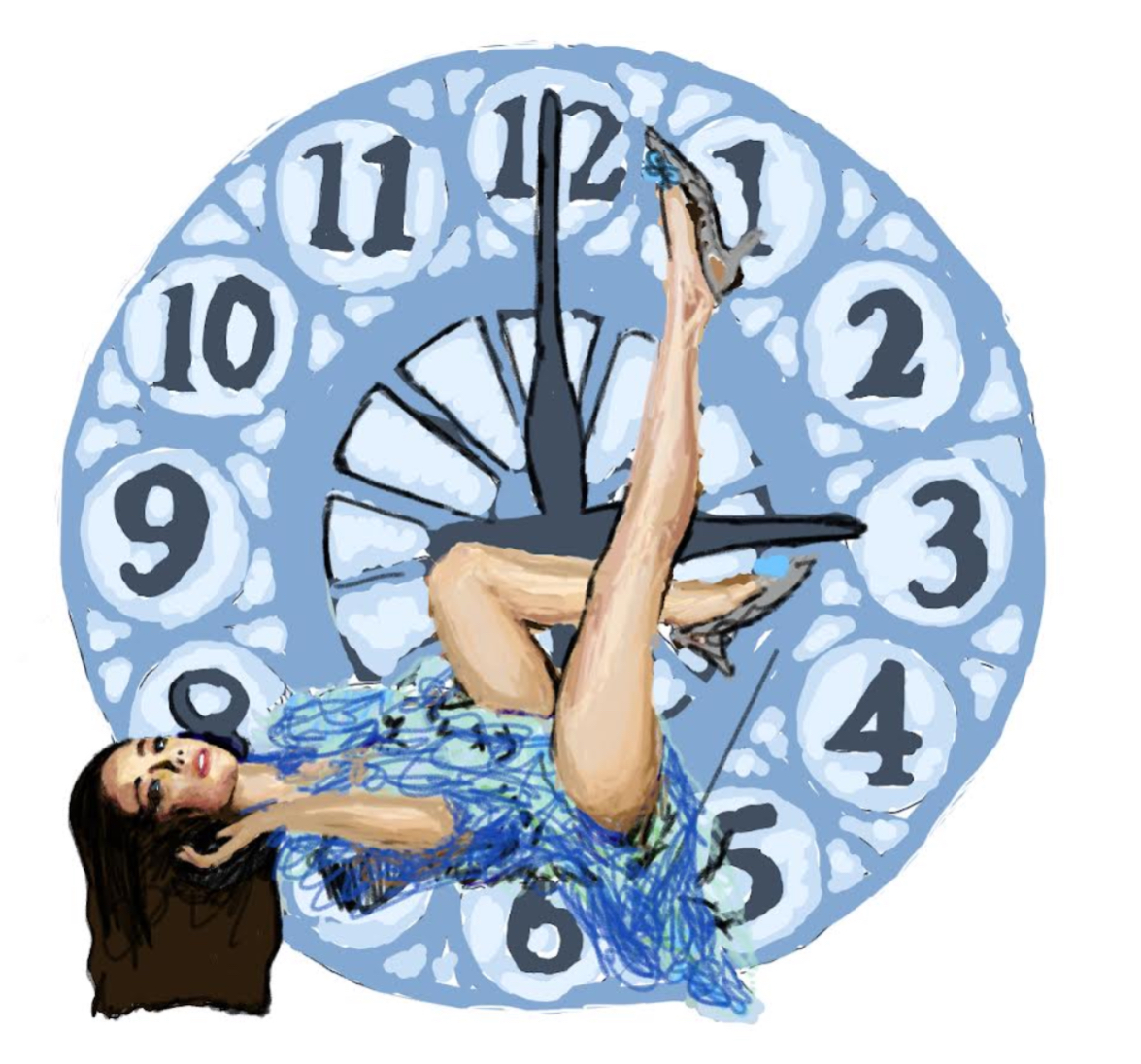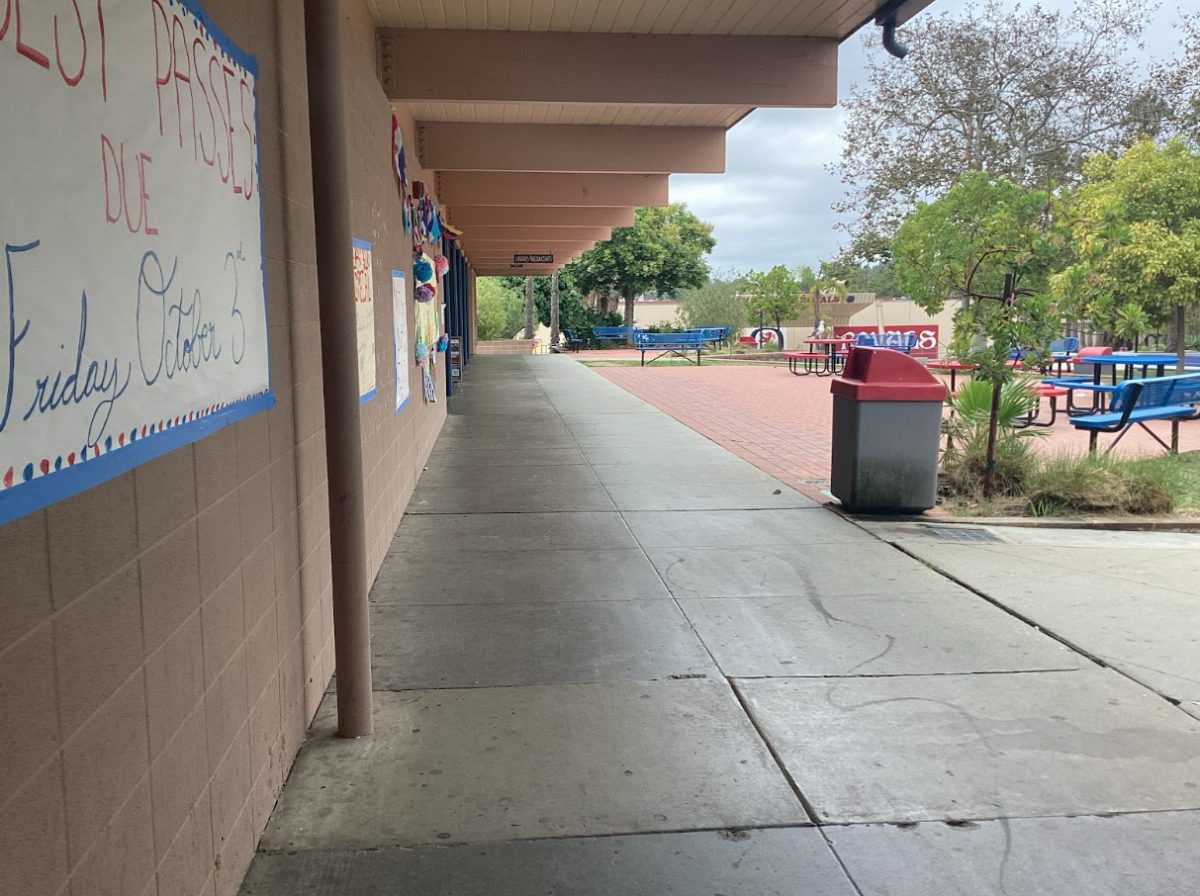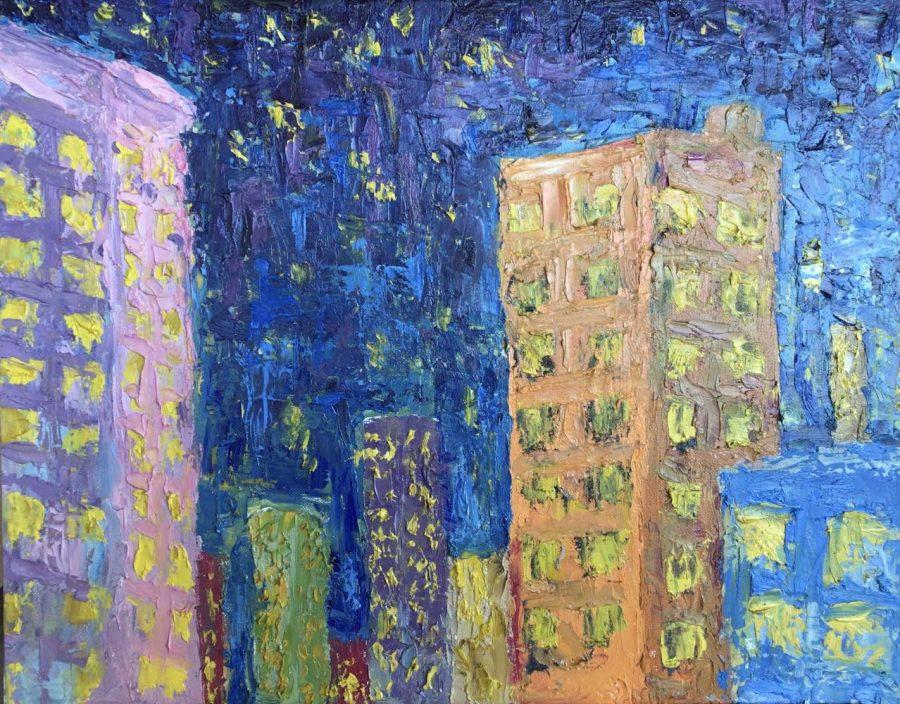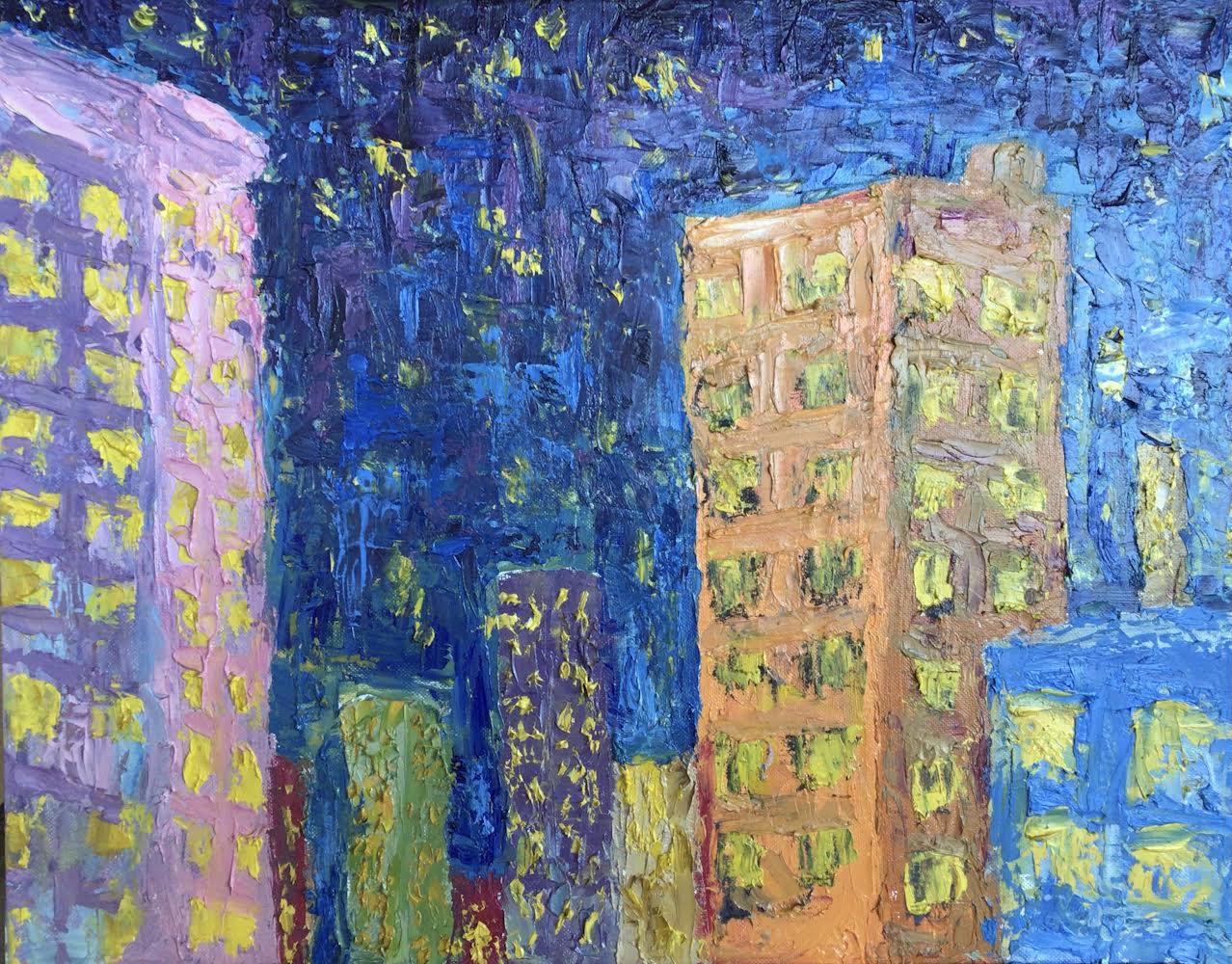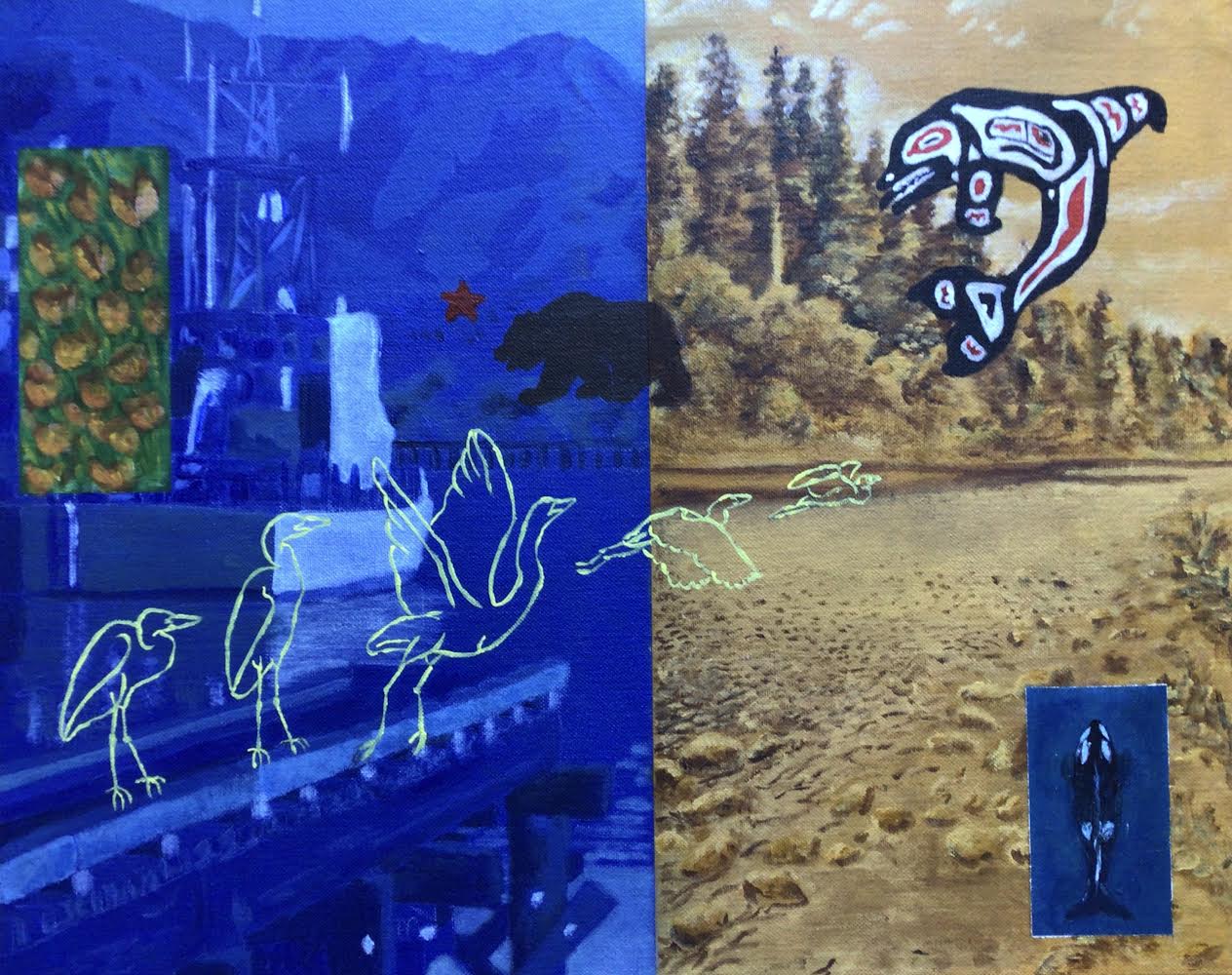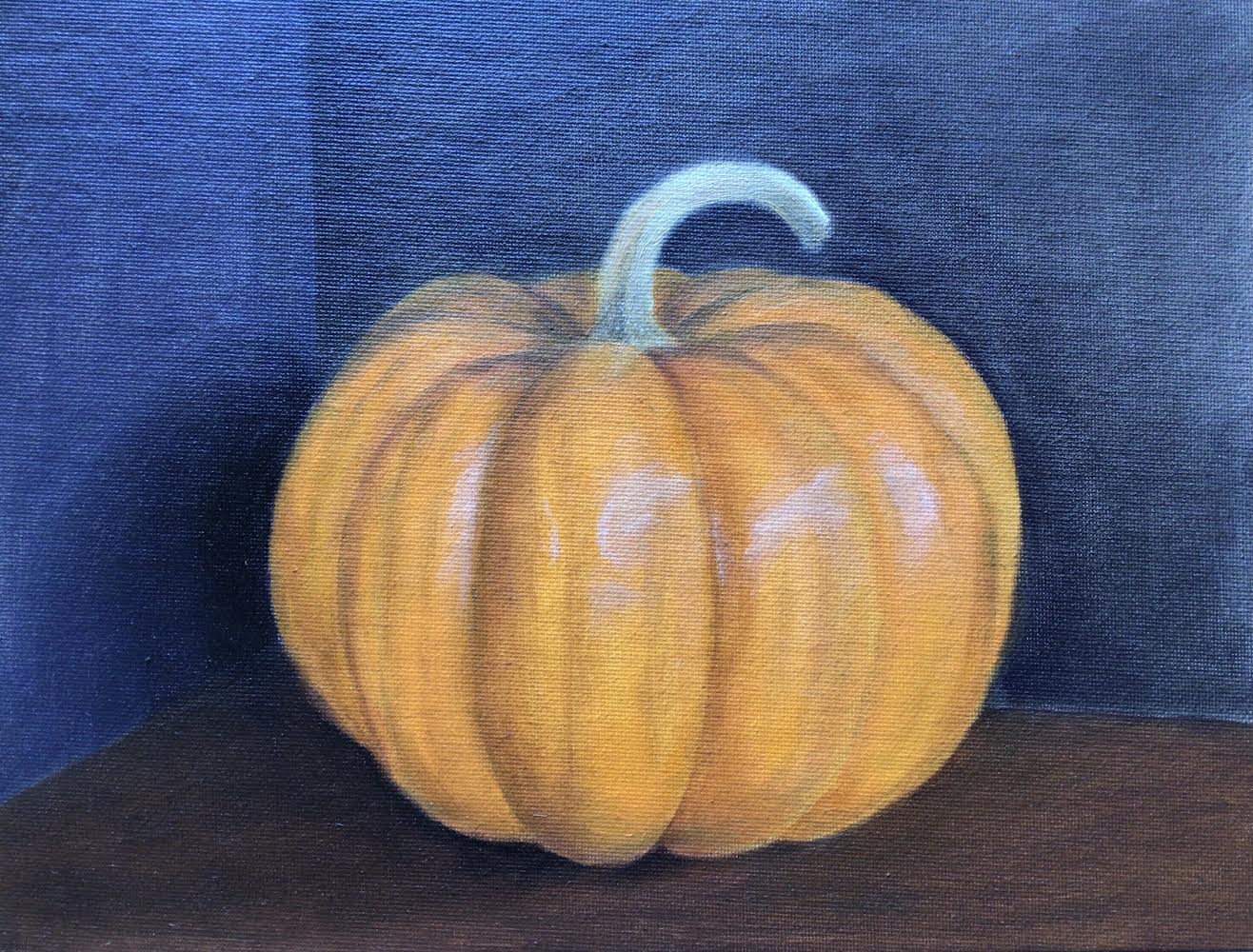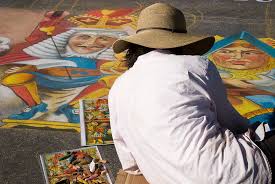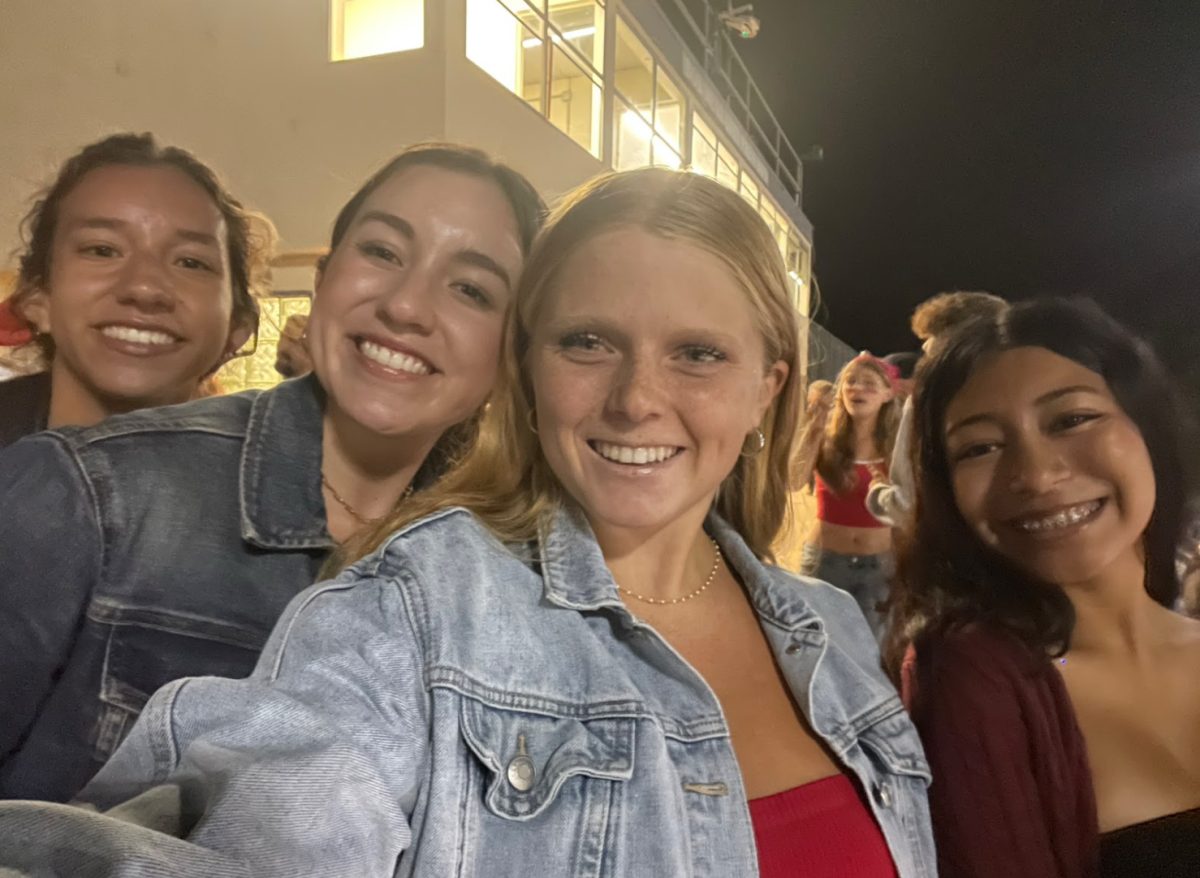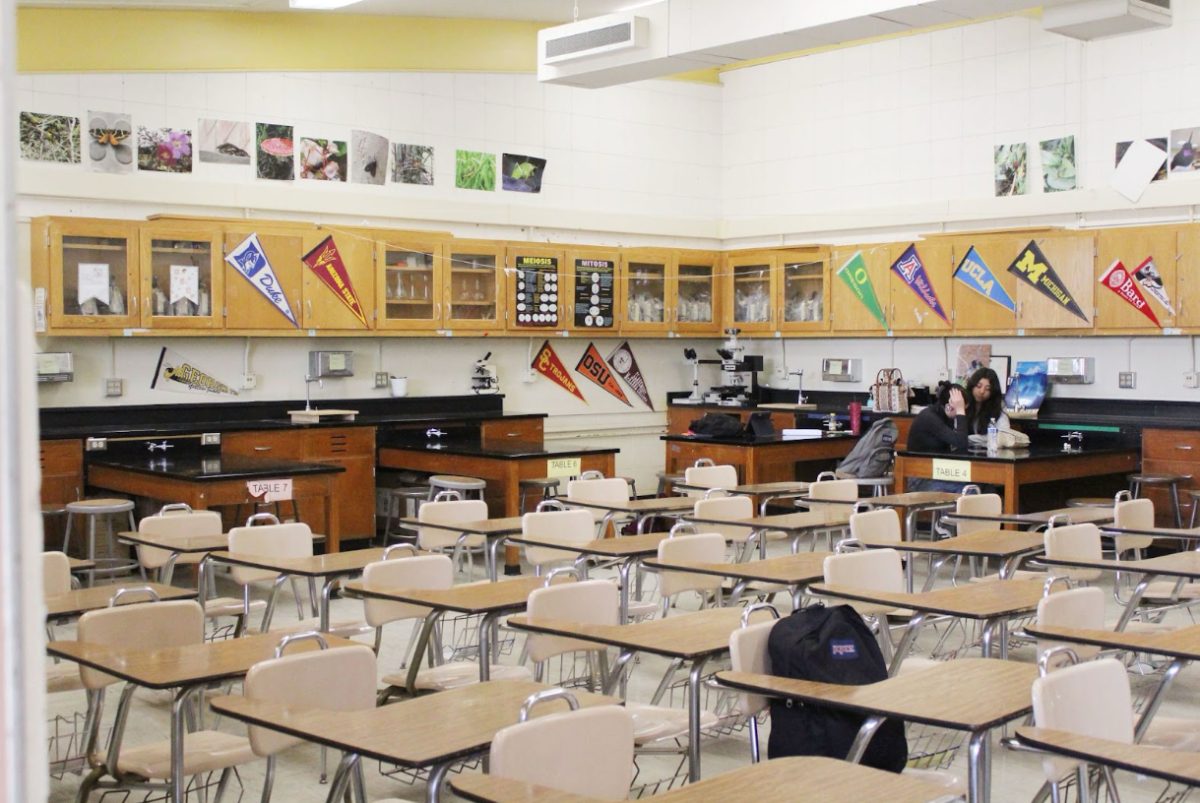In the season of January, festivities are over and the stretch to spring break seems endless. Yet during this long season students on campus still harness their creativity and make striking pieces.
Senior Sofia Martinez painted the piece CityScape, based off of a street in Buenos Aires, Argentina. Sofia explained that her parents immigrated here from Buenos Aires and how she used to go there every summer as a kid to visit her family. On her Dad’s side her heritage goes deep in Argentina, creating a special bond with the country.
Sofia combined her love for the city of her childhood and an artist she was inspired by: Duavi. Duavi specializes in abstract pieces, a speciality that Sofia could claim as well. The bright colors combined with the abstract shapes of the buildings perfectly creates a feeling of childhood sentimentals. A feeling that is impossible to forget paired with a memory that time had caused to feel fuzzy.
“It was a fun time to experiment,” said senior Sofia Martinez. “I actually didn’t use a Paint brush for the whole painting. I used a pallet knife.”
Another student, Lucy London, created a complex piece that makes the mind stretch nearly as far as the landscape goes. A combination of two pictures taken by Lucy, one of northern California and one of South California, spread over the canvas with an orca, a stork and other nature-esque images added on top. The final piece, called Dipitchy, formed a narrative of not just nature but of artist Lucy London’s passions.
“The picture on the right is from a trip I took to Northern California and the other is a picture I took of Southern California,” said sophomore Lucy London. “The Native American orca in the top right was inspired by where I grew up. I grew up in Seattle and there is a lot of that kind of art everywhere. Whereas a lot of people learned about missions in fourth grade, I learned about that kind of art.”
Lucy described her process like a collage, spontaneously taking pictures out of magazines to form to her taste. She spoke about not having a message in mind when forming the piece but more so letting herself choose what she liked and saw herself in.
Despite her lack of a plan at the beginning, one look at her painting can tell you that it centers around the environment.
“Well it wasn’t a conscious effort but most of the stuff I make is stuff I like and that [the environment] is the kind of the stuff I like,” said Lucy. “My whole life I have been involved in the environment and I’ve seen a lot of harm come to it. I admire it and I want to make sure it is still there 20 years from now.”
This happy accident quickly becomes profound. Because this art was made without an intended message, its variations in interpretations can deepen. When I first looked at it, I thought the stork in the center going from old to young on top of a background that went from saturation to monochrome symbolized the different ways we see the same world when we are young versus when we are older. Guaranteed, others who look at Lucy’s art will see, or feel unpredictable messages that are all sourced to her talents and creativity.
A third student on our campus made a picture that carries the sentimental feeling of these past paintings. Junior Megan Dalke painted a still life called “The Pumpkin” that carries much more nostalgia than the average gourd could. Megan explained that her pumpkin represented the season of fall, a time of year that holds memories of family and extravagant Halloweens. She described the reminiscent feeling as peaceful and calm. Even the use of her medium, oil paints, was done with the feeling of comfort and ease.
“I do digital art outside of school. It’s very flowy in a way. I usually don’t do chalk and pencils because I’m not used to the rough feeling of them. While it was my first time using oil paints, I really enjoyed them,” said Megan.
Another part of the process was drawing the realism of the pumpkin, an aspect impossible to miss because it was done with hard work and precision.
“It was an interesting shape and was repetitive because it has a symmetrical shape,” said Megan. “It got easier once you know the pattern of each segment on the pumpkin.”
Like the shape, the colors of the pumpkin are so lifelike, and not by coincidence. Megan explained that while painting and choosing the colors she kept a specific thought in her head. She thought about a fireplace and the emotions found inside one.
“It’s really important to know more than I’m replicating an object but to know that I am replicating an emotion,” said Megan.
The replication of emotions and sentimental scenes was a common thread among these three artists, and for no mistake. Choosing to paint previous times centers us and reminds us of places of comfort, reminders we need in such trying times. While looking at these paintings separately gives distinctly different feelings, all together they tell intertwining stories that compliment each other and spark curiosity in ourselves.

